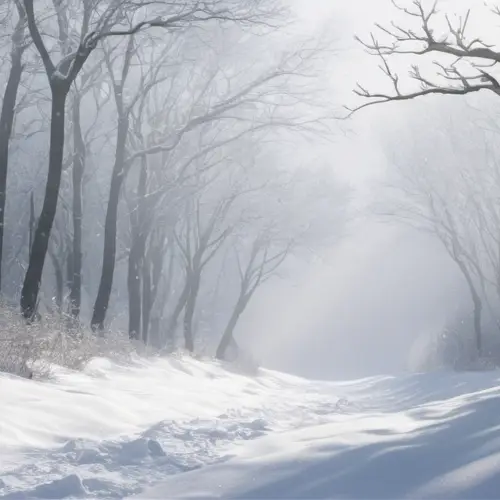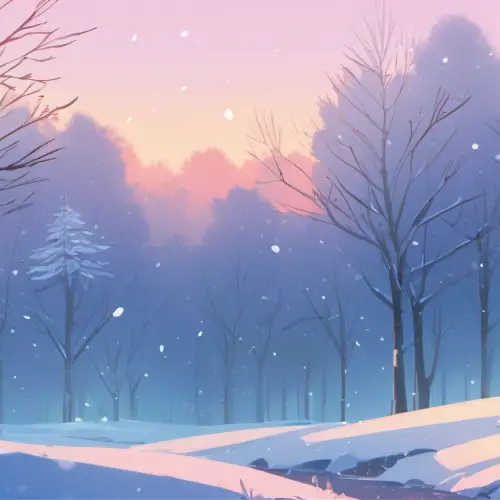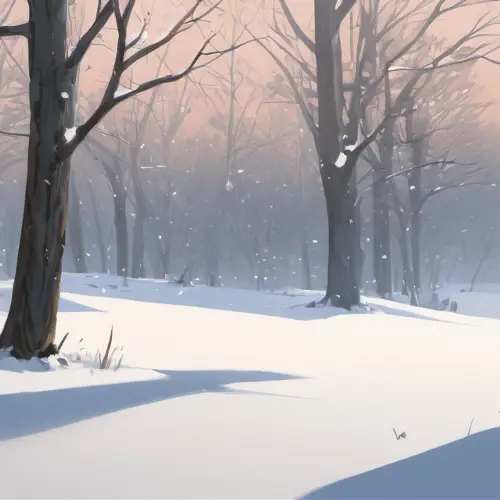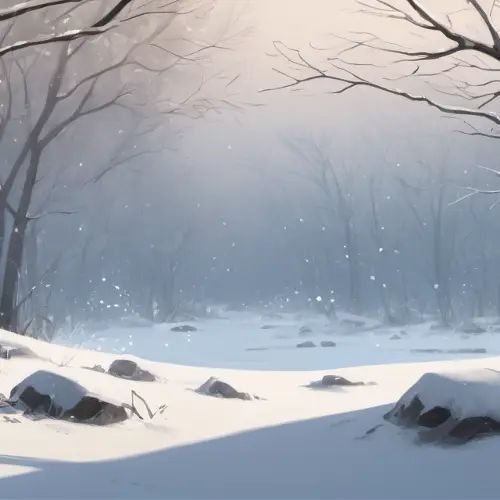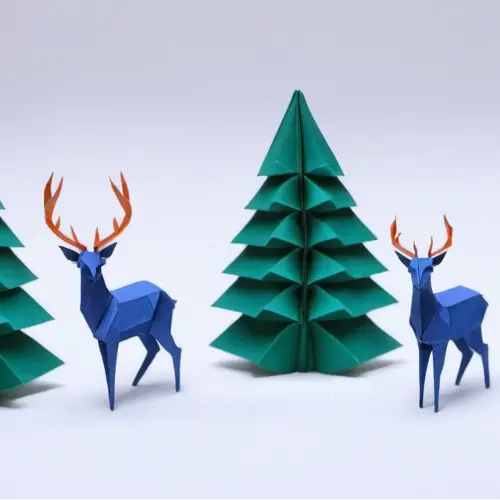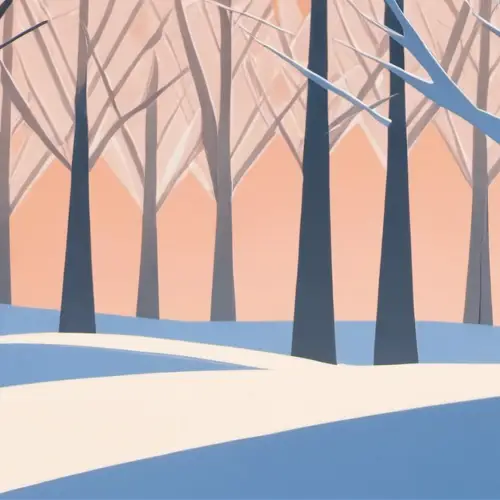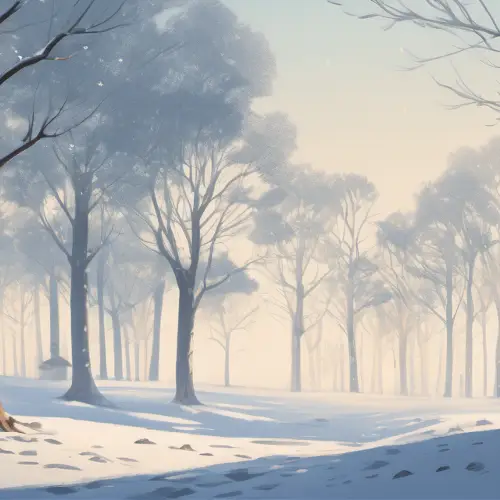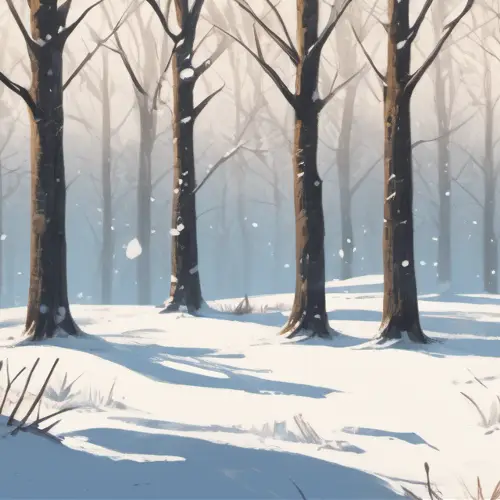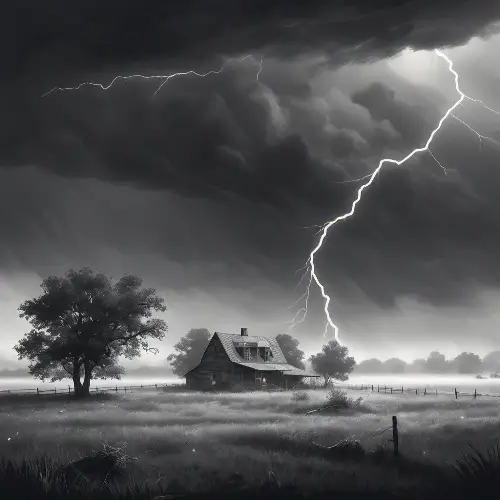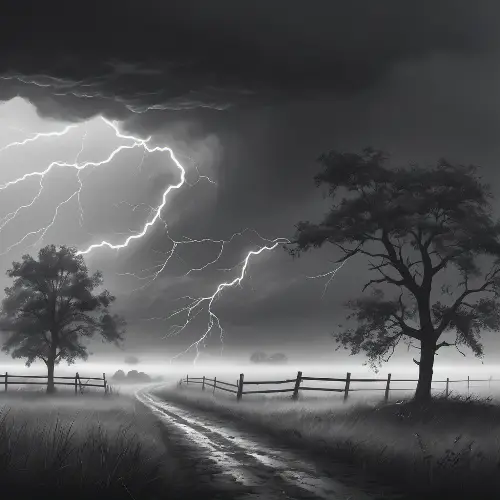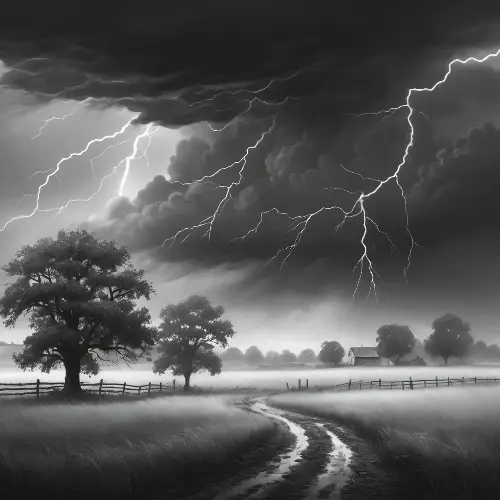Create a compelling monochromatic image against a black background that conveys the urgency of addressing climate change. Integrate subtle yet impactful color accents to highlight key elements. Emphasize the global awareness and governmental commitment to sustainability, aligning seamlessly with the current zeitgeist. The image should vividly communicate the pressing nature of the climate crisis, the imperative for immediate action, and the innovative solution offered by Cold Capture Solutions. This groundbreaking solution is capable of removing up to 150 tons of carbon dioxide per day, revolutionizing cost efficiency at $100 per ton. Utilize a monochromatic palette with strategic color accents to evoke urgency while harmonizing with the contemporary global mindset towards environmental sustainability.
More Like This
Craft a visual representation on a black background that powerfully conveys the urgency and timeliness of addressing climate change. Design an image that accentuates the global awareness and governmental commitment to sustainability, seamlessly blending with the current zeitgeist. Incorporate elements that vividly communicate the pressing nature of the climate crisis, the imperative for immediate action, and the groundbreaking solution offered by Cold Capture Solutions. This solution has the capability to remove up to 150 tons of carbon dioxide per day, setting a new standard for cost efficiency at $100 per ton. Utilize colors, symbols, or scenes that evoke urgency while harmonizing with the contemporary global mindset towards environmental sustainability
Craft a visual representation on a black background that powerfully conveys the urgency and timeliness of addressing climate change. Design an image that accentuates the global awareness and governmental commitment to sustainability, seamlessly blending with the current zeitgeist. Incorporate elements that vividly communicate the pressing nature of the climate crisis, the imperative for immediate action, and the groundbreaking solution offered by Cold Capture Solutions. This solution has the capability to remove up to 150 tons of carbon dioxide per day, setting a new standard for cost efficiency at $100 per ton. Utilize colors, symbols, or scenes that evoke urgency while harmonizing with the contemporary global mindset towards environmental sustainability
Craft a compelling monochromatic image against a black background that emphasizes the 'Why You?' aspect of Cold Capture Solutions. Integrate subtle yet impactful color accents strategically to highlight key elements conveying the passion and commitment of the team. The image should radiate a sense of dedication, showcasing the team's fervor for making a meaningful impact in the fight against climate change. The monochromatic palette should be complemented by carefully chosen color accents, underscoring the team's expertise, commitment, and proven track record. Use colors thoughtfully to evoke trust and inspiration, aligning with the ethos of Cold Capture Solutions.
visual representation that captures the sense of urgency and timeliness in addressing climate change. The image should emphasize the global awareness and governmental focus on sustainability, aligning perfectly with the current zeitgeist. Consider incorporating elements that convey the pressing nature of the climate crisis, the need for immediate action, and the innovative solution offered by Cold Capture Solutions, capable of removing up to 150 tons of carbon dioxide per day at an unprecedented cost efficiency of $100 per ton. Use colors, symbols, or scenes that evoke a sense of urgency and align with the contemporary global mindset towards environmental sustainability
Capture a powerful moment that epitomizes the 'Why You?' essence of Cold Capture Solutions. The image should be monochromatic against a black background, with carefully chosen color accents to highlight expressions of passion and enthusiasm on the faces of team members. This photo should encapsulate the team's unwavering commitment and dedication to driving positive change in the fight against climate change. Emphasize inspiring facial expressions, genuine smiles, and an overall positive energy that radiates commitment. Use monochrome tones for the background, and integrate strategic color accents to underscore the team's expertise, sincerity, and proven success. This image should evoke trust, inspiration, and a shared commitment to a sustainable future
Capture a powerful moment that epitomizes the 'Why You?' essence of Cold Capture Solutions. The image should be monochromatic against a black background, with carefully chosen color accents to highlight expressions of passion and enthusiasm on the faces of team members. This photo should encapsulate the team's unwavering commitment and dedication to driving positive change in the fight against climate change. Emphasize inspiring facial expressions, genuine smiles, and an overall positive energy that radiates commitment. Use monochrome tones for the background, and integrate strategic color accents to underscore the team's expertise, sincerity, and proven success. This image should evoke trust, inspiration, and a shared commitment to a sustainable future
Dual canvas: snow fall on one side and heat strokes in other. Title is \"Climate Change\"
Dual canvas: snow fall on one side and heat strokes in other. Title is \"Climate Change\", conceptual art, illustration, typography
Generate a visually compelling image depicting the submersion of Jakarta, the capital of Indonesia. Showcase the city underwater with a focus on key landmarks to convey the impact of rising sea levels. Integrate recognizable landmarks such as the National Monument (Monas), Istiqlal Mosque, and iconic buildings partially submerged in water. Key Elements to Include: Cityscape Underwater: Visualize Jakarta submerged, conveying the consequences of rising sea levels. Capture the essence of the city sinking while maintaining clarity and detail. Landmarks Partially Submerged: Highlight prominent landmarks like the National Monument and Istiqlal Mosque partially submerged in water. Emphasize the contrast between the recognizable structures and the submerged environment. Dramatic Lighting: Use lighting effects to create a dramatic atmosphere, reflecting the urgency and gravity of the situation. Play with shadows and reflections to enhance the underwater scene. Symbolic Elements: Consider incorporating symbolic elements that evoke a sense of environmental awareness and urgency regarding climate change and its impact on urban areas.
Generate a visually compelling image depicting the submersion of Jakarta, the capital of Indonesia. Showcase the city underwater with a focus on key landmarks to convey the impact of rising sea levels. Integrate recognizable landmarks such as the National Monument (Monas), Istiqlal Mosque, and iconic buildings partially submerged in water. Key Elements to Include: Cityscape Underwater: Visualize Jakarta submerged, conveying the consequences of rising sea levels. Capture the essence of the city sinking while maintaining clarity and detail. Landmarks Partially Submerged: Highlight prominent landmarks like the National Monument and Istiqlal Mosque partially submerged in water. Emphasize the contrast between the recognizable structures and the submerged environment. Dramatic Lighting: Use lighting effects to create a dramatic atmosphere, reflecting the urgency and gravity of the situation. Play with shadows and reflections to enhance the underwater scene. Symbolic Elements: Consider incorporating symbolic elements that evoke a sense of environmental awareness and urgency regarding climate change and its impact on urban areas.
Generate a visually compelling image depicting the submersion of Jakarta, the capital of Indonesia. Showcase the city underwater with a focus on key landmarks to convey the impact of rising sea levels. Integrate recognizable landmarks such as the National Monument (Monas), Istiqlal Mosque, and iconic buildings partially submerged in water. Key Elements to Include: Cityscape Underwater: Visualize Jakarta submerged, conveying the consequences of rising sea levels. Capture the essence of the city sinking while maintaining clarity and detail. Landmarks Partially Submerged: Highlight prominent landmarks like the National Monument and Istiqlal Mosque partially submerged in water. Emphasize the contrast between the recognizable structures and the submerged environment. Dramatic Lighting: Use lighting effects to create a dramatic atmosphere, reflecting the urgency and gravity of the situation. Play with shadows and reflections to enhance the underwater scene. Symbolic Elements: Consider incorporating symbolic elements that evoke a sense of environmental awareness and urgency regarding climate change and its impact on urban areas.
Create three schematic illustrations in the form of technical drawings, each depicting a direct capture setup for carbon dioxide removal from air. The setups should vary in size, representing large, medium, and small-scale installations. Ensure that the illustrations have a black background to emulate a technical drawing aesthetic. For each illustration, focus on detailing the key components involved in stable diffusion. Include the main capturing unit, air intake mechanism, and any additional components crucial to the capture process. Labeling should be clear and consistent, and provide a brief description for each setup to highlight its scale and functionality. Понял вас. Внесем несколько изменений в prompt, чтобы подчеркнуть, что изображения должны иметь черный фон и быть в виде чертежа: Prompt: Create three schematic illustrations in the form of technical drawings, each depicting a direct capture setup for carbon dioxide removal from air. The setups should vary in size, representing large, medium, and small-scale installations. Ensure that the illustrations have a black background to emulate a technical drawing aesthetic. For each illustration, focus on detailing the key components involved in stable diffusion. Include the main capturing unit, air intake mechanism, and any additional components crucial to the capture process. Labeling should be clear and consistent, and provide a brief description for each setup to highlight its scale and functionality. Additional Instructions: Large-scale Setup: Emphasize industrial dimensions and components suitable for extensive carbon dioxide removal. Highlight any unique features or technologies designed for efficiency in large-scale operations. Medium-scale Setup: Illustrate a setup of intermediate size suitable for applications in diverse environments. Showcase adaptability and integration with existing infrastructure, if applicable. Small-scale Setup: Focus on a compact design suitable for decentralized or smaller-scale applications. Highlight portability or integration into community settings for localized carbon dioxide removal. Ensure that each illustration is presented as a technical drawing with clear lines and details against a black background. Use appropriate shading and line weights to enhance the visual appeal of the drawings. Include relevant labels and annotations to aid understanding.
climate change, environmental science, global warming effects, ecological balance, sustainable solutions, 16K high resolution, ultra detailed and shapren quality image science illustration, best quality, by EcoVision Studios
Poster design on 'climate change', creative, innovative, handmade, public awareness
Poster design on 'climate change', creative, innovative, handmade, public awareness
Poster design on 'climate change', creative, innovative, handmade, public awareness
Poster design on 'climate change', creative, innovative, handmade, public awareness
Poster design on 'climate change', creative, innovative, handmade, public awareness
Poster design on 'climate change', creative, innovative, handmade, public awareness
A young girl amid the ruins, post-apocalyptic wasteland, distant smokestacks, dried river bed, scattered remnants of human civilization, worn poncho for protection from harsh sun, carrying salvaged items in bag, walking stick for support and defense, Expressionist style reminiscent of Edvard Munch, Diego Rivera, and Oskar Kokoschka, inspiration from modern eco-artist Isaac Cordal, bringing attention to climate change impacts, environmental message of hope, 16K digital canvas.
Low-carbon, eco-friendly, carbon neutrality,photographic image.style:red art
The scenery in winter is stunning, with magnificent snow. It features towering snow-covered trees that add a touch of magic to the scene. Theres also a charming snowman standing proudly in the foreground, creating a whimsical atmosphere. The backdrop includes majestic buildings that complement the serene beauty of the snow-covered surroundings. To ensure that the resulting images are of the highest quality and realism, please include the following tags: (Best Quality, 4k, 8k, High Resolution, Masterpiece: 1.2), Super Detailed, (Realistic, Photorealistic, Photorealistic: 1.37), HDR, Ultra HD, studio lighting, ultra-fine painting, sharp focus, physically based rendering, extreme detail, professional, vibrant colors and bokeh. To enhance the artistic style of your image, consider adding a \Landscape\ tag to emphasize the beautiful winter scenery. In terms of color tone, please use blue, white, and silver as the main colors to create a cool and bright atmosphere. As for lighting, make sure the scene is bathed in soft natural light, with subtle changes in shadows creating a sense of depth and dimension. Remember to maintain a coherent and harmonious composition, Studio Ghibli style, environment painting, EpicSky,
To create a visual representation of a \"winter forest,\" we'll consider conveying the essence of a forest during the wintertime. This entails depicting elements such as bare trees, snow, cool color tones, and perhaps wildlife or signs of life that are commonly associated with a forest in the winter season. Here's how you can create this visual representation: Overall Layout: Decide on the perspective of your visual – it could be a landscape view, a close-up of a part of the forest, or an abstract representation. Sketch or outline the basic shapes and areas where you will place the main elements such as trees, snowdrifts, and the sky. Trees: Draw or use images of trees with bare branches to represent deciduous trees in their dormant state. For evergreen trees, indicate their shapes with fuller, triangular forms to contrast with the bare branches. Use white or light gray to add touches of snow on the branches. Snow: Depict snow on the ground with curving lines to represent undulating snowdrifts. Use a bright white or slightly blue-tinted white for the snow to convey chilliness. Consider adding subtle shadows to the snow to create depth, using light blue or gray. Color Palette: Utilize cool tones such as blues, whites, and grays to convey the cold temperature. If there's a sunrise or sunset, you may introduce warmer hues like pink or orange in the sky, but keep it subtle. Wildlife and Details: If you want to showcase life in the winter forest, consider adding animals such as deer, rabbits, or birds. You can also add finer details like animal tracks in the snow, icicles hanging from branches, or a frozen stream. Atmosphere: Create a sense of atmosphere by adding light fog or mist to illustrate cold winter air, using light grey or soft white washes. To depict a time of day, consider the position and color of light; soft morning light, the gray overcast of midday, or the golden hues of a setting sun. Finishing Touches: Review your visual to ensure a balanced composition, and add any final details or adjustments to enhance realism or abstraction, depending on your style. Consider adding a slight vignette effect or framing with tree branches at the edges to draw focus into the center of the scene. To bring this visualization to life, you can use various mediums such as drawing by hand, digital illustration, or even arranging a collage with mixed materials. Consider also the context in which this visual will be used, as that might dictate the level of detail and stylization you apply to your representation of the winter forest.
To create a visual representation of a \"winter forest,\" we'll consider conveying the essence of a forest during the wintertime. This entails depicting elements such as bare trees, snow, cool color tones, and perhaps wildlife or signs of life that are commonly associated with a forest in the winter season. Here's how you can create this visual representation: Overall Layout: Decide on the perspective of your visual – it could be a landscape view, a close-up of a part of the forest, or an abstract representation. Sketch or outline the basic shapes and areas where you will place the main elements such as trees, snowdrifts, and the sky. Trees: Draw or use images of trees with bare branches to represent deciduous trees in their dormant state. For evergreen trees, indicate their shapes with fuller, triangular forms to contrast with the bare branches. Use white or light gray to add touches of snow on the branches. Snow: Depict snow on the ground with curving lines to represent undulating snowdrifts. Use a bright white or slightly blue-tinted white for the snow to convey chilliness. Consider adding subtle shadows to the snow to create depth, using light blue or gray. Color Palette: Utilize cool tones such as blues, whites, and grays to convey the cold temperature. If there's a sunrise or sunset, you may introduce warmer hues like pink or orange in the sky, but keep it subtle. Wildlife and Details: If you want to showcase life in the winter forest, consider adding animals such as deer, rabbits, or birds. You can also add finer details like animal tracks in the snow, icicles hanging from branches, or a frozen stream. Atmosphere: Create a sense of atmosphere by adding light fog or mist to illustrate cold winter air, using light grey or soft white washes. To depict a time of day, consider the position and color of light; soft morning light, the gray overcast of midday, or the golden hues of a setting sun. Finishing Touches: Review your visual to ensure a balanced composition, and add any final details or adjustments to enhance realism or abstraction, depending on your style. Consider adding a slight vignette effect or framing with tree branches at the edges to draw focus into the center of the scene.
To create a visual representation of a \"winter forest,\" we'll consider conveying the essence of a forest during the wintertime. This entails depicting elements such as bare trees, snow, cool color tones, and perhaps wildlife or signs of life that are commonly associated with a forest in the winter season. Here's how you can create this visual representation: Overall Layout: Decide on the perspective of your visual – it could be a landscape view, a close-up of a part of the forest, or an abstract representation. Sketch or outline the basic shapes and areas where you will place the main elements such as trees, snowdrifts, and the sky. Trees: Draw or use images of trees with bare branches to represent deciduous trees in their dormant state. For evergreen trees, indicate their shapes with fuller, triangular forms to contrast with the bare branches. Use white or light gray to add touches of snow on the branches. Snow: Depict snow on the ground with curving lines to represent undulating snowdrifts. Use a bright white or slightly blue-tinted white for the snow to convey chilliness. Consider adding subtle shadows to the snow to create depth, using light blue or gray. Color Palette: Utilize cool tones such as blues, whites, and grays to convey the cold temperature. If there's a sunrise or sunset, you may introduce warmer hues like pink or orange in the sky, but keep it subtle. Wildlife and Details: If you want to showcase life in the winter forest, consider adding animals such as deer, rabbits, or birds. You can also add finer details like animal tracks in the snow, icicles hanging from branches, or a frozen stream. Atmosphere: Create a sense of atmosphere by adding light fog or mist to illustrate cold winter air, using light grey or soft white washes. To depict a time of day, consider the position and color of light; soft morning light, the gray overcast of midday, or the golden hues of a setting sun. Finishing Touches: Review your visual to ensure a balanced composition, and add any final details or adjustments to enhance realism or abstraction, depending on your style. Consider adding a slight vignette effect or framing with tree branches at the edges to draw focus into the center of the scene.
To create a visual representation of a \"winter forest,\" we'll consider conveying the essence of a forest during the wintertime. This entails depicting elements such as bare trees, snow, cool color tones, and perhaps wildlife or signs of life that are commonly associated with a forest in the winter season. Here's how you can create this visual representation: Overall Layout: Decide on the perspective of your visual – it could be a landscape view, a close-up of a part of the forest, or an abstract representation. Sketch or outline the basic shapes and areas where you will place the main elements such as trees, snowdrifts, and the sky. Trees: Draw or use images of trees with bare branches to represent deciduous trees in their dormant state. For evergreen trees, indicate their shapes with fuller, triangular forms to contrast with the bare branches. Use white or light gray to add touches of snow on the branches. Snow: Depict snow on the ground with curving lines to represent undulating snowdrifts. Use a bright white or slightly blue-tinted white for the snow to convey chilliness. Consider adding subtle shadows to the snow to create depth, using light blue or gray. Color Palette: Utilize cool tones such as blues, whites, and grays to convey the cold temperature. If there's a sunrise or sunset, you may introduce warmer hues like pink or orange in the sky, but keep it subtle. Wildlife and Details: If you want to showcase life in the winter forest, consider adding animals such as deer, rabbits, or birds. You can also add finer details like animal tracks in the snow, icicles hanging from branches, or a frozen stream. Atmosphere: Create a sense of atmosphere by adding light fog or mist to illustrate cold winter air, using light grey or soft white washes. To depict a time of day, consider the position and color of light; soft morning light, the gray overcast of midday, or the golden hues of a setting sun. Finishing Touches: Review your visual to ensure a balanced composition, and add any final details or adjustments to enhance realism or abstraction, depending on your style. Consider adding a slight vignette effect or framing with tree branches at the edges to draw focus into the center of the scene.
To create a visual representation of a \"winter forest,\" we'll consider conveying the essence of a forest during the wintertime. This entails depicting elements such as bare trees, snow, cool color tones, and perhaps wildlife or signs of life that are commonly associated with a forest in the winter season. Here's how you can create this visual representation: Overall Layout: Decide on the perspective of your visual – it could be a landscape view, a close-up of a part of the forest, or an abstract representation. Sketch or outline the basic shapes and areas where you will place the main elements such as trees, snowdrifts, and the sky. Trees: Draw or use images of trees with bare branches to represent deciduous trees in their dormant state. For evergreen trees, indicate their shapes with fuller, triangular forms to contrast with the bare branches. Use white or light gray to add touches of snow on the branches. Snow: Depict snow on the ground with curving lines to represent undulating snowdrifts. Use a bright white or slightly blue-tinted white for the snow to convey chilliness. Consider adding subtle shadows to the snow to create depth, using light blue or gray. Color Palette: Utilize cool tones such as blues, whites, and grays to convey the cold temperature. If there's a sunrise or sunset, you may introduce warmer hues like pink or orange in the sky, but keep it subtle. Wildlife and Details: If you want to showcase life in the winter forest, consider adding animals such as deer, rabbits, or birds. You can also add finer details like animal tracks in the snow, icicles hanging from branches, or a frozen stream. Atmosphere: Create a sense of atmosphere by adding light fog or mist to illustrate cold winter air, using light grey or soft white washes. To depict a time of day, consider the position and color of light; soft morning light, the gray overcast of midday, or the golden hues of a setting sun. Finishing Touches: Review your visual to ensure a balanced composition, and add any final details or adjustments to enhance realism or abstraction, depending on your style. Consider adding a slight vignette effect or framing with tree branches at the edges to draw focus into the center of the scene.
Create three schematic illustrations depicting direct capture setups for carbon dioxide removal from air. The setups should vary in size, representing large, medium, and small-scale installations. Focus on clear and concise depictions of the key components involved in the stable diffusion process. Ensure that each illustration includes the main capturing unit, air intake mechanism, and any additional components crucial to the capture process. Use consistent labeling and provide a brief description for each setup to highlight its scale and functionality.
Create three schematic illustrations depicting direct capture setups for carbon dioxide removal from air. The setups should vary in size, representing large, medium, and small-scale installations. Focus on clear and concise depictions of the key components involved in the stable diffusion process. Ensure that each illustration includes the main capturing unit, air intake mechanism, and any additional components crucial to the capture process. Use consistent labeling and provide a brief description for each setup to highlight its scale and functionality.
create a realistic environment featuring snow and ice, suitable for a professional photoshoot. Specify key elements such as the type of terrain, lighting conditions, and any additional elements that would enhance the winter ambiance. Include details on the desired mood or atmosphere, and consider factors like time of day, weather conditions, and any specific objects or structures that should be present in the scene to make it visually compelling for a photoshoot
Illustrate a highly detailed, realistic scene of a grayscale rural landscape on a misty morning. Incorporate a distant horizon to provide depth to the composition. Integrate a dramatic lightning storm on the horizon, using various shades of grey for stormy clouds. Pay meticulous attention to the misty surroundings, emphasizing realistic shadows. Capture the ethereal atmosphere of a serene landscape under a dynamic and moody lightning-lit sky.
Illustrate a highly detailed, realistic scene of a grayscale rural landscape on a misty morning. Incorporate a distant horizon to provide depth to the composition. Integrate a dramatic lightning storm on the horizon, using various shades of grey for stormy clouds. Pay meticulous attention to the misty surroundings, emphasizing realistic shadows. Capture the ethereal atmosphere of a serene landscape under a dynamic and moody lightning-lit sky.
environmental science, climate change concepts, eco-friendly technologies, sustainability visuals, Earths ecosystems, 16K high resolution, ultra detailed and shapren quality image science illustration, by Eco Vision Designs
environmental science, climate change concepts, eco-friendly technologies, sustainability visuals, Earths ecosystems, 16K high resolution, ultra detailed and shapren quality image science illustration, by Eco Vision Designs
parched earth, dried riverbeds, melting glaciers, flooded coastlines, displaced communities, rising sea levels, extreme weather events, barren farmland, food shortages, wildlife struggling to survive, pollution, smoke-filled skies, climate refugees, solar panels and wind turbines, young activists protesting, hope for the future, digital painting, cinematic lighting, inspired by Alexis Rockman and John Audubon, 16K masterpiece, acrylic textures, photorealistic details, loose painterly style, dramatic skies, by Alexis Rockman, John Audubon, and Alberto Aguilar
parched earth, dried riverbeds, melting glaciers, flooded coastlines, displaced communities, rising sea levels, extreme weather events, barren farmland, food shortages, wildlife struggling to survive, pollution, smoke-filled skies, climate refugees, solar panels and wind turbines, young activists protesting, hope for the future, digital painting, cinematic lighting, inspired by Alexis Rockman and John Audubon, 16K masterpiece, acrylic textures, photorealistic details, loose painterly style, dramatic skies, by Alexis Rockman, John Audubon, and Alberto Aguilar














































